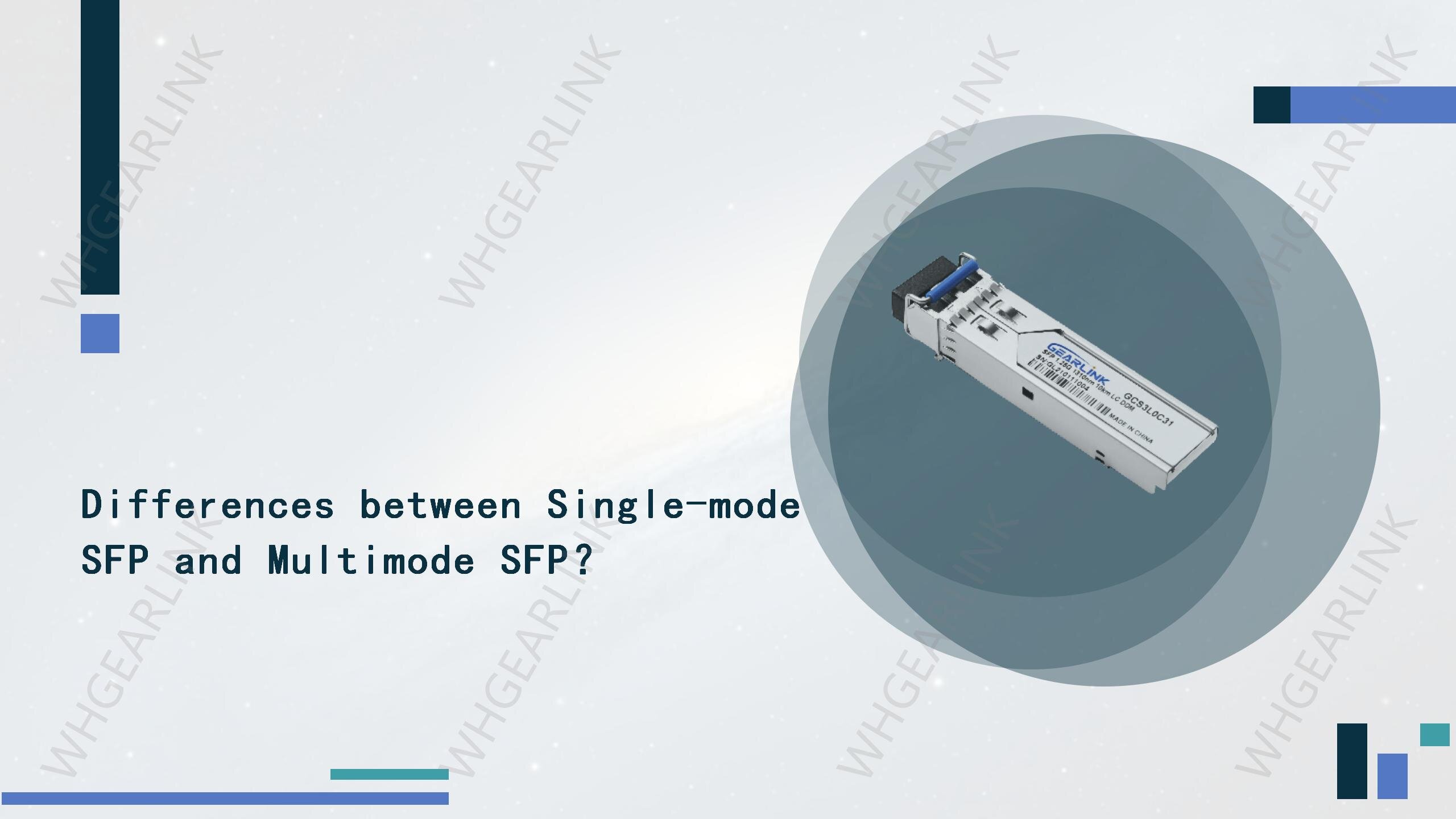
Abstract
SFP single-mode and multi-mode optical transceiver s are commonly used transmission equipment in optical communications. The former uses single-mode fiber for long-distance transmission, and the latter uses multi-mode fiber for short-distance transmission. The choice depends on transmission distance and cost considerations, while also paying attention to wavelength compatibility and regular maintenance.
Text
SFP single-mode optical transceivers and SFP multi-mode optical transceivers are two types of transmission equipment commonly used in the field of optical communications. They have obvious differences in terms of transmission media and transmission distance. Below we will detail their differences.
Single mode and multimode SFP transceiver s use single-mode optical fiber for transmission, and are usually used for longer-distance optical fiber transmission. The core diameter of single-mode fiber is smaller, usually 9/125μm (i.e. a core diameter of 9μm and an outer diameter of about 125μm), allowing it to transmit optical signals over longer distances. The transmission distance of single-mode optical transceiver s can usually reach tens of kilometers or even hundreds of kilometers.
SFP multi-mode optical transceiver s use multi-mode optical fibers for transmission and are usually suitable for shorter distance optical fiber transmission. The core diameter of multimode fiber is larger, usually 50/125μm or 62.5/125μm, making its transmission distance relatively short, usually several hundred meters.
First of all, there is a big difference in the transmission distance between SFP single-mode optical transceiver s and SFP multi-mode optical transceiver s. Due to the smaller core diameter of single-mode fiber, SFP single-mode optical transceiver s can transmit optical signals over longer distances, usually up to tens of kilometers or even hundreds of kilometers. The larger core diameter of multimode optical fiber limits the transmission distance of SFP multimode optical transceiver s, which usually can only transmit a few hundred meters.
Secondly, the wavelengths and application scenarios of SFP single-mode optical transceiver s and SFP multi-mode optical transceiver s are also different. In single-mode optical transceiver s, common wavelengths are 1310 nanometers (nm) and 1550 nanometers (nm). Among them, the 1310nm wavelength is commonly used for optical signal transmission in optical fiber systems, while the 1550nm wavelength is usually used for long-distance transmission in optical fiber transmission systems, such as optical fiber backbone networks in optical fiber communication systems. In multi-mode optical transceiver s, the common wavelength is 850nm, and occasionally 1310nm. Among them, the 850nm wavelength is usually used for short-distance multi-mode optical fiber transmission, such as optical fiber transmission in local area networks. The 1310nm wavelength is usually used for longer-distance multi-mode fiber transmission, such as fiber optic connections across buildings. It should be noted that the wavelengths of single-mode optical transceiver s and multi-mode optical transceiver s are generally fixed and cannot be freely selected. Therefore, when selecting an optical transceiver , it is necessary to select a suitable optical transceiver wavelength based on actual application requirements and the compatibility of the optical fiber system.
Finally, the costs of SFP single-mode optical transceiver s and SFP multi-mode optical transceiver s are also different. Since the manufacturing process of single-mode optical transceiver s is relatively complex, its cost is relatively high. In comparison, the manufacturing cost of multi-mode optical transceiver s is relatively low. Therefore, the price of SFP single-mode optical transceiver s is usually higher than that of SFP multi-mode optical transceivers.
As can be seen from the above, whether to choose SFP single-mode optical transceiver or SFP multi-mode optical transceiver mainly depends on the transmission distance. Take the SFP Gigabit optical transceiver as an example. For transmission within a distance of 550 meters, a multi-mode optical transceiver with a wavelength of 850nm is required. For transmissions below 2km, use multi-mode optical transceiver s with a wavelength of 1310nm. For transmissions above 2km, you must choose single-mode optical transceiver s with a wavelength of 1310nm or 1550nm.
Tips on using SFP single-mode optical transceiver s and SFP multi-mode optical transceivers
1. If your network needs to cover longer distances and requires high-speed data transmission, SFP single-mode optical transceiver s may be a better choice.
2. When selecting SFP optical transceiver, consult with the supplier to understand the compatibility and performance of different models.
3. Regularly check and clean the SFP optical transceiver to ensure its normal operation.
There are differences between SFP single-mode optical transceiver s and SFP multi-mode optical transceiver s in terms of transmission distance and cost. When selecting SFP optical transceiver s, you should consider your transmission needs as well as budget constraints to choose the optical transceiver that best suits your network. Regularly inspect and maintain the SFP optical transceiver to ensure it is working properly. Depending on your needs and budget, choosing the right SFP optical transceiver will help improve the performance and reliability of your network.

